Ecolecyber - CTF 101
-
Prêt.e?
No Answer
-
Lu
No Answer
-
Dans cette section, nous allons démystifier cette technologie qui a changé le monde à tout jamais.
No Answer
-
Quel élément est ajouté au début de l'URL lorsqu'on affiche le code source?
For this use right click on the page then "view page source" :
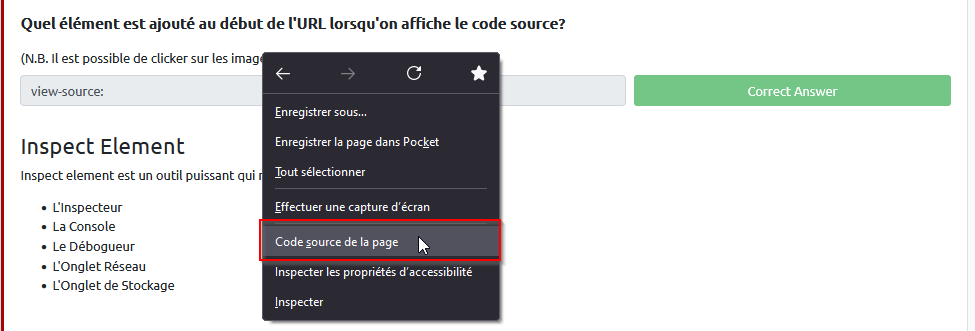
Then check the URL :

Answer : view-source:
-
Quel est la balise utilisé par les hyperliens
(Si ça aurait été h1 (celui du titre) vous aurez répondu <h1>)
Same, do right click then "inspect" and hover an hyperlink as shown below :
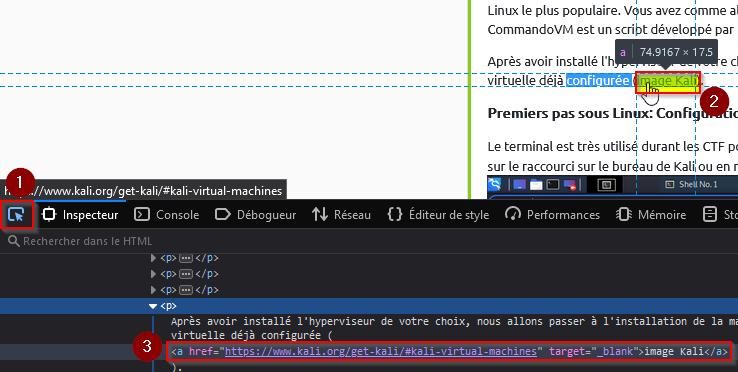
Answer : <a>
-
Quel est la fonction Javascript utilisé pour écrire un message dans la console
(N'oubliez pas les parenthèses -> fonction() )
Search in the console or on the web :

Answer : console.log()
-
Quelle balise HTML indique le début de code Javascript dans le document HTML
(Si ça aurait été h1 (celui du titre) vous aurez répondu <h1>)
View a page source and search for javascript inside :
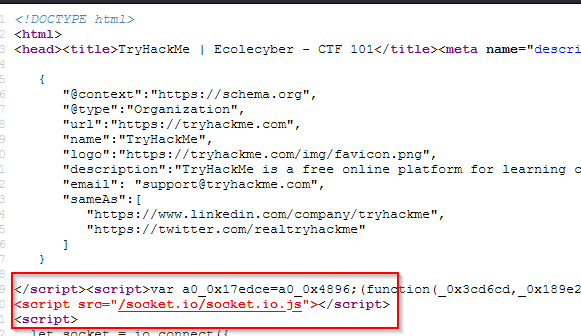
Answer : <script>
Quel code de statut est retourné par le serveur web pour indiquer que tout c'est bien passé dans la requête HTTP
Press F12 or right click > inspect to have the developper tools, then go to network tab and refresh the page (F5). Keep an eye on the returns status :

Answer : 200
-
Quelle propriété d'un cookie permet de limiter son utilisation à un site web précis?
(Donnez son nom tel qu'il apparait en anglais)
Open the developper tools again and go to storage. Select one of the cookies and look in the attributes :

Answer : domain
-
BurpSuite
No Answer.
-
L'URL démystifié
No Answer.
-
L'HTTP vs. l'HTTPS
No Answer.
-
C'est quoi un cookie?
Stateless vs statefull + persistence of sessions.
No Answer.
-
L'utilité du HTML
No Answer.
-
OWASP 10
Injection
Broken Authentication
Sensitive Data Exposure
XML External Entity
Broken Access Control
Security Misconfiguration
Cross-site Scripting
Insecure Deserialization
Components with Known Vulnerabilities
Insufficent Logging & Monitoring
No Answer.
- Lu
No Answer.
-
Lu
No Answer.
-
lu
No Answer.
-
Lu
No Answer.
-
Lu
No Answer.
- Quel est le protocole de transfer de fichier utilisé ?
Open the dump in wireshark and we got the protocol :

Answer : FTP
-
Quel est le mot de passe de l'admin ?
FTP is insecure and let us see the password when traffic is sniffed :

Answer : FtP_1S_1NsEcUrE!
-
Quelle est le répertoire courant ?
Filtering on ftp to see only traffic which is interesting :

Answer : /home/admin
- Quel est le modèle de la caméra qui a pris cette photo?
Using Jeffrey's Image Metadata Viewer :
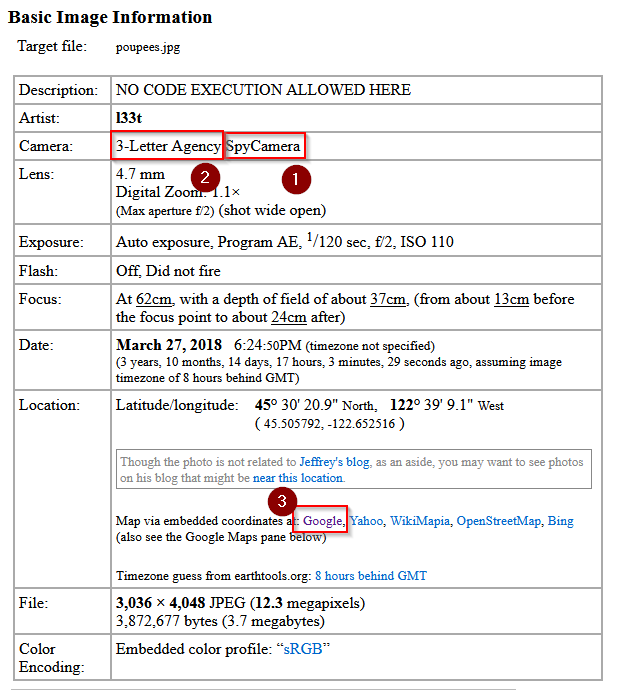
or below full data :
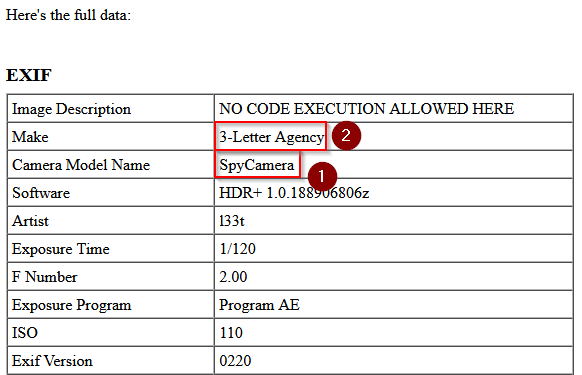
Answer : SpyCamera
-
Quelle est le make de la caméra?
Answer : 3-Letter Agency
-
Cette photo a été prise dans quelle ville?
Using the open coordinates with google maps we have :
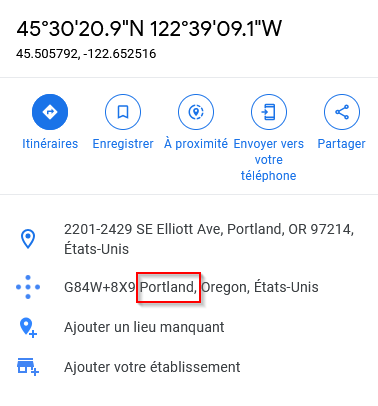
Answer : Portland
-
Quel jour la photo a été prise?
Checking back the date in the calendar ;

The answer is in french !!
Answer : mardi
- Vous avez probablement remarqué que j'ai utilisé les termes "encodé" et "crypté". D'après vous, veulent-ils dire la même chose? (répondez par OUI ou NON)
Encoding transforms data into another format using a publicly available scheme so that it can be easily reversed.
Encryption transforms data into another format such that only specific individuals can reverse the transformation.
source ; danielmiessler.com
Answer : Non
-
Un exemple de chiffrage que vous utilisez quotidiennement est le HTTPS. En effet, Hypertext Transfer Protocol Secure (https) crypte vos communication en utilisant Transport layer Security (TLS). Ainsi, si un attaquant intercepterait vos communications (attaque "Man in the middle") avec le site internet, il ne serait pas capable de la déchiffrer et donc n'aura pas accès à l'information envoyée entre ton navigateur et le serveur web.
No Answer.
-
HTTP chiffre votre communication avec le serveur et garantie l'authenticité du site web contacté. (VRAI ou FAUX)
It's wrong, HTTPS in the right protocol.
Answer : Faux
-
Can you decode this top secret message? 102 108 97 103 123 77 64 115 55 51 114 95 48 102 95 65 36 36 67 49 49 125
Using cyberchef :
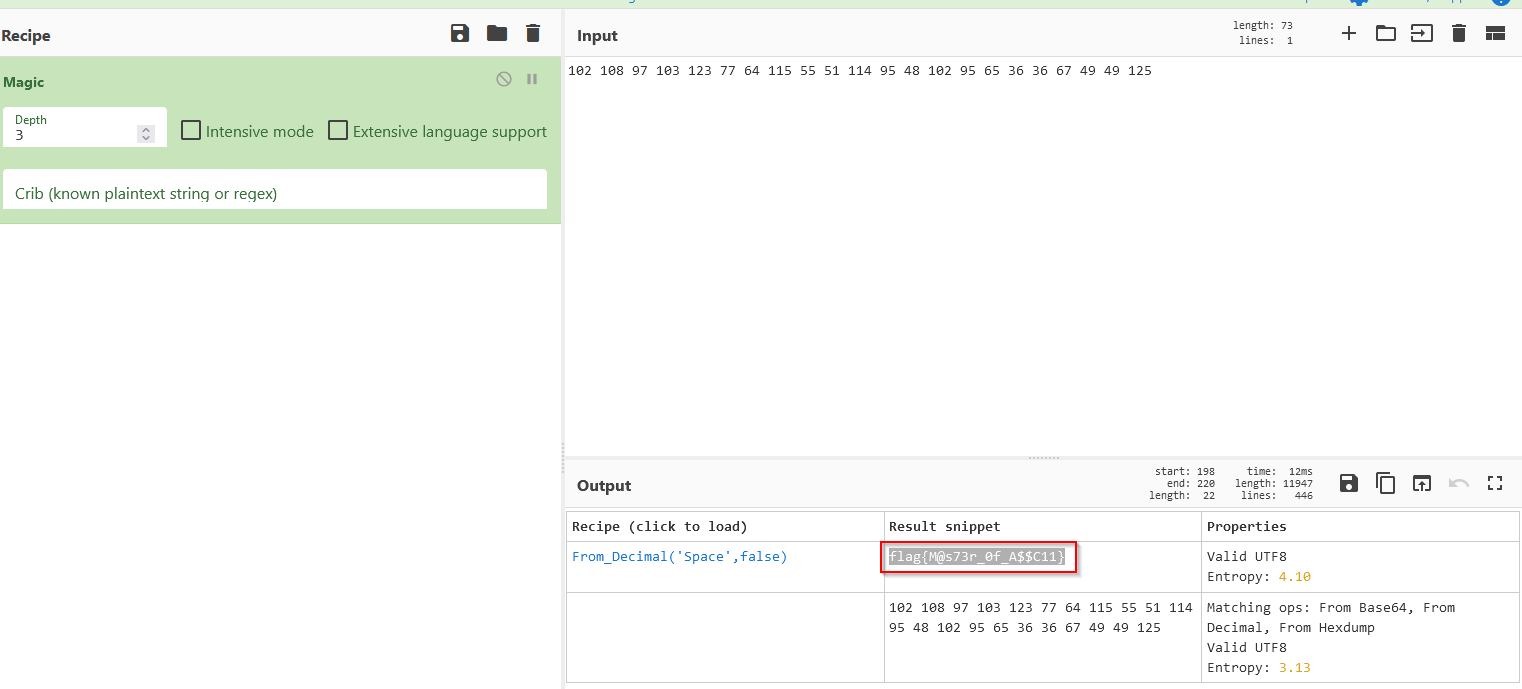
Answer : flag{M@s73r_0f_A$$C11}
-
ENCODAGE URL
No Answer.
-
UNICODE
No Answer.
-
Le XOR peut alors être utilisé pour chiffrer un message. Il suffit de XOR le message avec une clé de même taille comme vu dans l'image.Il est important par contre de respecter quelques critères pour assurer la robustesse de ce chiffrement.
- avoir une longue clé secrète qui est non-répétitive
- avoir une clé généré aléatoirement pour chaque nouvelle communication
- la clé doit être maintenu
No Answer.
-
CHIFFRAGE ASYMÉTRIQUE
No Answer.
-
CHIFFRAGE SYMÉTRIQUE
No Answer.
-
Télécharger le fichier pdfencryption.pdf. Quel est le contenu de ce fichier ?
I used john the ripper to brute force the password :
┌──(kali㉿kali)-[/opt/JohnTheRipper/run]
└─$ ./pdf2john.pl /home/kali/Documents/THM/ecoleCTF/encryption.pdf > /home/kali/Documents/THM/ecoleCTF/encrypt.hash
┌──(kali㉿kali)-[~/Documents/THM/ecoleCTF]
└─$ cat encrypt.hash
/home/kali/Documents/THM/ecoleCTF/encryption.pdf:$pdf$2*3*128*-4*1*16*733fb6d05e1aa24fb646300e91994d30*32*a709e10baf63f670f2b1694f2d1fb4380122456a91bae5134273a6db134c87c4*32*475fa4a10e5308c40de79c8b35f7406ccf53009f5d15ae3d70e0c1491ceef762
──(kali㉿kali)-[~/Documents/THM/ecoleCTF]
└─$ john encrypt.hash
Using default input encoding: UTF-8
Loaded 1 password hash (PDF [MD5 SHA2 RC4/AES 32/64])
Cost 1 (revision) is 3 for all loaded hashes
Will run 4 OpenMP threads
Proceeding with single, rules:Single
Press 'q' or Ctrl-C to abort, almost any other key for status
Almost done: Processing the remaining buffered candidate passwords, if any.
Proceeding with wordlist:/usr/share/john/password.lst
thunderbird (/home/kali/Documents/THM/ecoleCTF/encryption.pdf)
1g 0:00:00:00 DONE 2/3 (2022-02-11 18:34) 1.960g/s 104047p/s 104047c/s 104047C/s leslie..crawford
Use the "--show --format=PDF" options to display all of the cracked passwords reliably
Session completed.
I use this password to open the pdf file and found the flag :

Answer : Flag{E@sy_PdF_H@Ck1Ng!}
-
Maintenant que vous comprenez le concept de LSB, pouvez-vous dire quel byte est plus grand?
100000 ou 11111
Answer : 100000
-
Maintenant que vous savez comment cacher des messages, pouvez-vous décoder la lettre et le chiffre correspondant en hexadécimale qui est caché dans cette suite binaire:
(P.S. Le processus de décodage est le même que celui d'encodage mais à l'inverse)
1001010010101011001001111001100000010001001100100100010110110111
répondre avec ce format: lettre=chiffre=binaire
(chiffre en hexadecimal)
Rearrange the 0 and 1 by octet :
10010100 10101011 00100111 10011000 00010001 00110010 01000101 10110111
then all least significant bit are :
01101011
Which convert with cyberchef from binary correspond to the letter k :
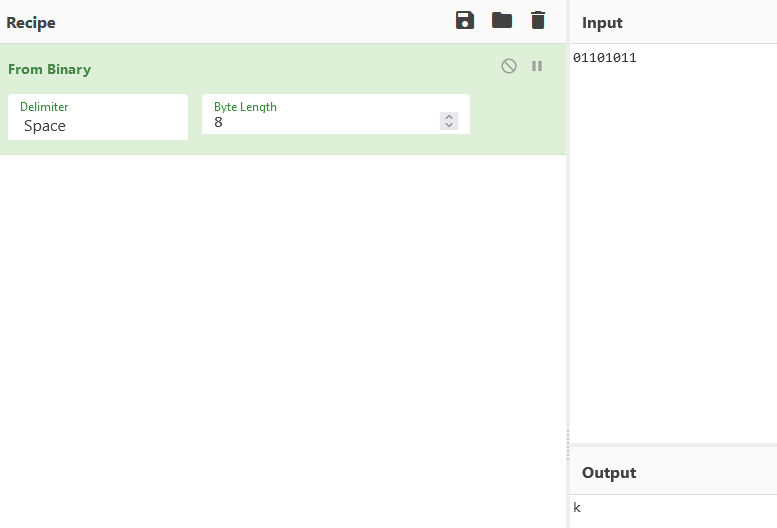
Then converting this to hex :
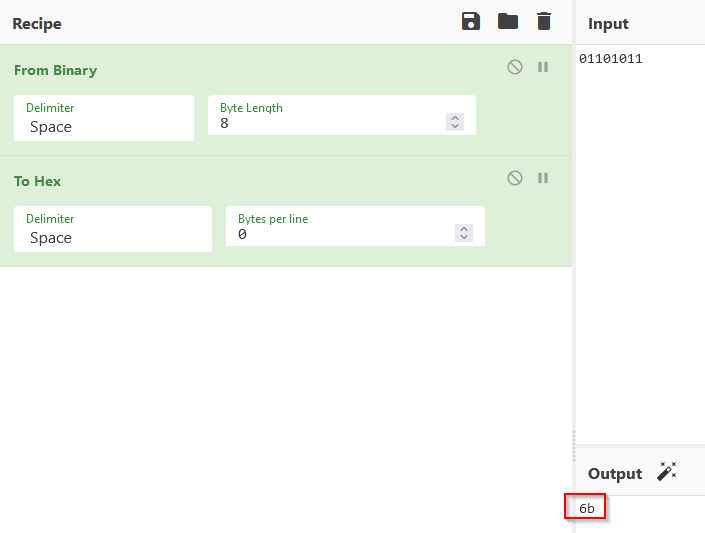
giving the answer in the format letter=hex=binary
Answer : k=6b=01101011
- lu
No Answer